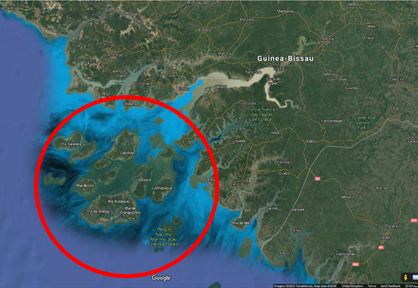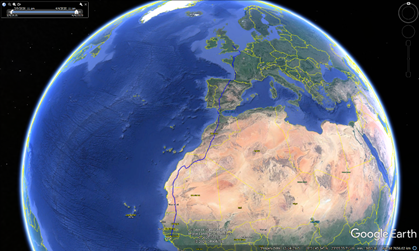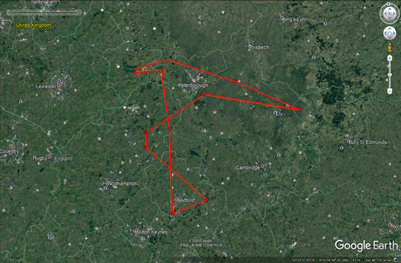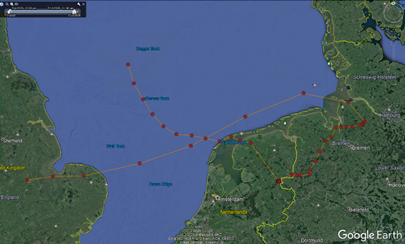Five year old male, S1(15) fledged from Manton Bay in 2015 and was one of the first chicks Maya and 33(11) successfully raised as a breeding pair. S1(15) first returned to the UK two years later in 2017, where he was first spotted in Poole Harbour then later back in Rutland. In 2018, he was fitted with one of two available satellite transmitters, which would enable us to gain an exciting and valuable insight into his movements throughout the year.
Thanks to the satellite transmitter we have learned that S1(15) spends the winter months on a group of islands in an area of rich mangrove swamps, just off the coast of Guinea-Bissau.





